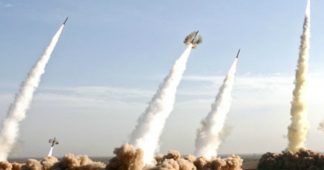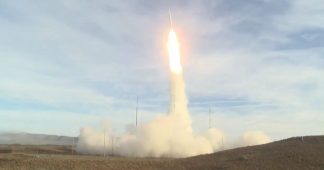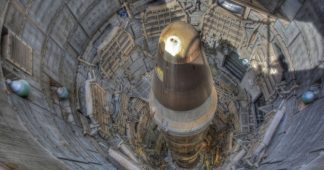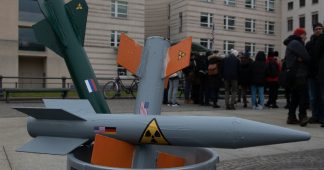By Manlio Dinucci
November 20, 2020
Over five years ago we titled in the Manifesto ((9 June 2015) “Are missiles returning to Comiso? (Sicily).” This hypothesis was ignored by the entire political spectrum and dismissed by some self-styled expert as “alarmist.” The alarm, unfortunately, was well founded.
A few days ago, on November 6, Lockheed Martin (the same company that produces the F-35s) signed a first $ 340 million contract with the US Army for the production of medium-range missiles, including those armed with nuclear warheads, designed to be installed in Europe. Missiles of this category (with a ground base and range between 500 and 5500 km) were prohibited by the INF Treaty, signed in 1987 by Presidents Gorbachev and Reagan: it had eliminated the nuclear ballistic missiles Pershing 2, deployed by the United States in Western Germany, and the nuclear cruise Tomahawk missiles, deployed by the United States in Italy (Comiso, Sicily), Great Britain, West Germany, Belgium, and Holland, and at the same time the SS-20 ballistic missiles deployed by the Soviet Union on its territory.
In 2014, without any evicence, the Obama administration accused Russia of having tested a cruise missile (acronym 9M729) in the category prohibited by the Treaty, and, in 2015, announced that “faced with the violation of the INF Treaty by Russia, the United States is considering the deployment of ground-based missiles in Europe.”
The baton then passed to the Trump administration, which in 2019 decided on the withdrawal of the United States from the INF Treaty, accusing Russia of having “deliberately violated” it.
After some missile tests, Lockheed Martin was commissioned to build a cruise missile deriving from the Tomahawk and a ballistic missile deriving from Raytheon’s SM-6. According to the contract, the two missiles will be operational in 2023: therefore, ready to be installed in Europe in two years.
The geographic factor should be kept in mind: while a medium-range US nuclear ballistic missile launched from Europe can hit Moscow in a few minutes, a similar missile launched by Russia can hit European capitals, but not Washington. Reversing the scenario, it is as if Russia were to deploy medium-range nuclear missiles in Mexico.
It should also be noted that the SM-6 performs the function of “three missiles in one,” as Raytheon specified: anti-aircraft, anti-missile and attack missile. The nuclear missile deriving from the SM-6 will therefore be able to be used by the US “shield” ships and land installations in Europe: their launch tubes, as Lockheed Martin specified, can launch “missiles for all missions.”
In his October 26, 2020 statement, President Putin reaffirmed the INF Treaty validity, calling the US withdrawal a “grave mistake,” and Russia’s commitment not to deploy similar missiles, until the US deploys its own missiles close to Russian territory. He, therefore, proposed a “mutual moratorium” to NATO countries and “mutual verification measures,” that is inspections in the reciprocal missile installations.
The Russian proposal was ignored by NATO. Its secretary-general Jens Stoltenberg reiterated on 10 November that “in such an uncertain world, nuclear weapons continue to play a vital role in preserving peace.”
No voices were raised from European governments and parliaments, even though Europe risks being at a nuclear confrontation forefront similar or more dangerous than that of the Cold War. But this is not the threat of Covid 19, and therefore nobody talks of it.
The European Union, (21 over 27 members are part of NATO), has already made its voice heard when in 2018 it rejected the resolution presented by Russia on the “Preservation and observance of the INF Treaty” at the United Nations, giving the green light to the installation of new US nuclear missiles in Europe.
Will anything change once Joe Biden takes office in the White House? Or, will Democrat Biden (formerly Obama’s vice president) sign the installation of the new US nuclear missiles in Europe, after Democratic Obama opened the new nuclear confrontation with Russia and Republican Trump aggravated it by tearing up the INF Treaty?
This article was originally published in Italian on Il Manifesto.
* Manlio Dinucci is a Research Associate of the Centre for Research on Globalization.
Featured image is from International Campaign to Abolish Nuclear Weapons
Published at www.globalresearch.ca











